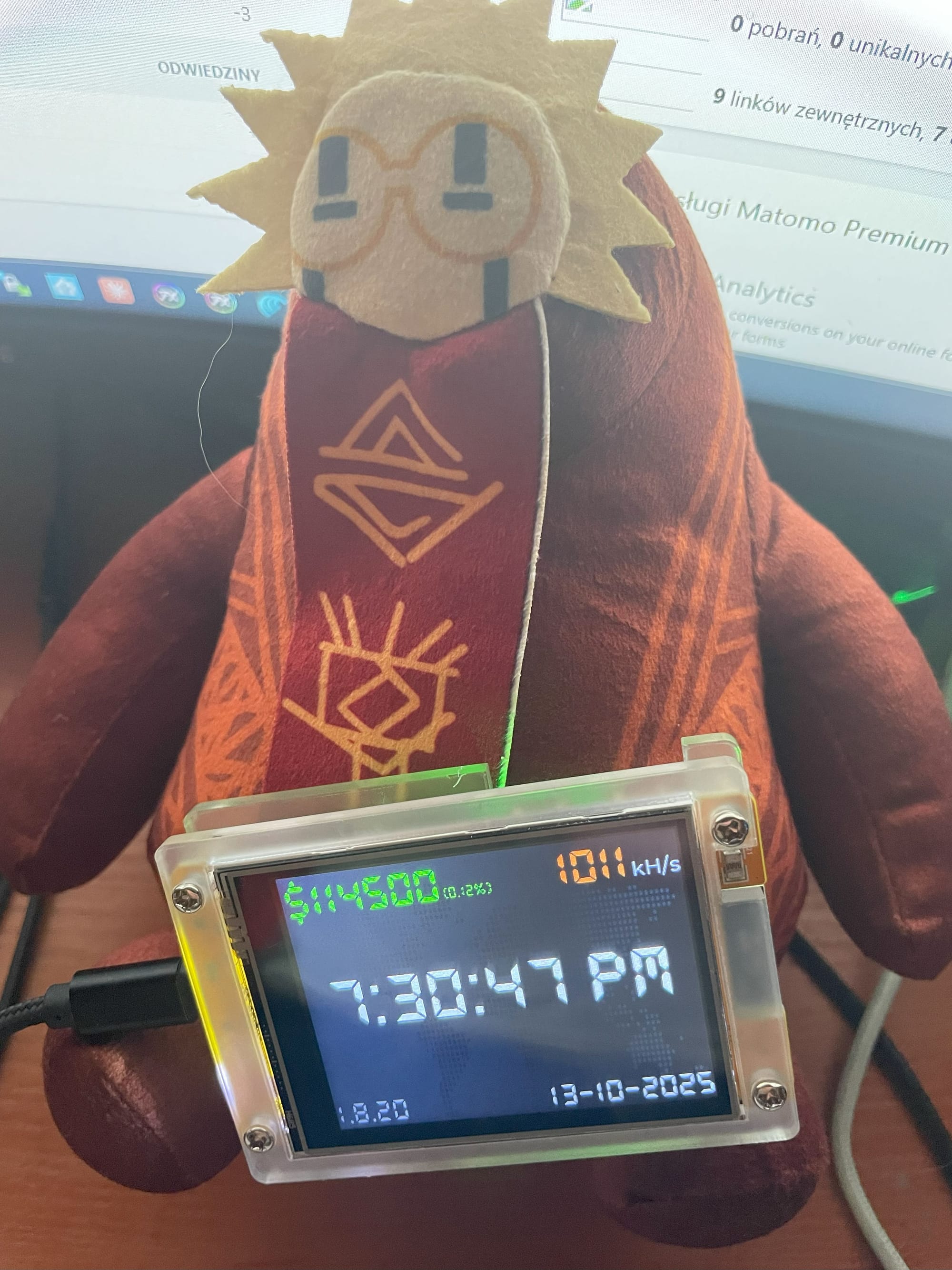Or: How I Learned to Stop Worrying and Love Astronomical Odds
Let me start with a question that sounds absurd: What's more likely to make you rich? Buying lottery tickets three times a week, or leaving a tiny ESP32 device humming away on your desk, attempting to solo mine Bitcoin blocks at a whopping 1000 KH/s?
The answer might surprise you. It certainly surprised me.
I recently fell down the rabbit hole of "lottery mining" after discovering the NMMiner project—a brilliantly simple ESP32-based Bitcoin miner that costs about $20 and consumes a mere 1 watt of power. That's less than an LED bulb. The idea? Run it forever, hope for the best, and maybe—just maybe—hit the cryptographic lottery.
But before we dive into this gadget, let's do some math. Because nothing says "fun Friday evening" like calculating astronomical probabilities, right?
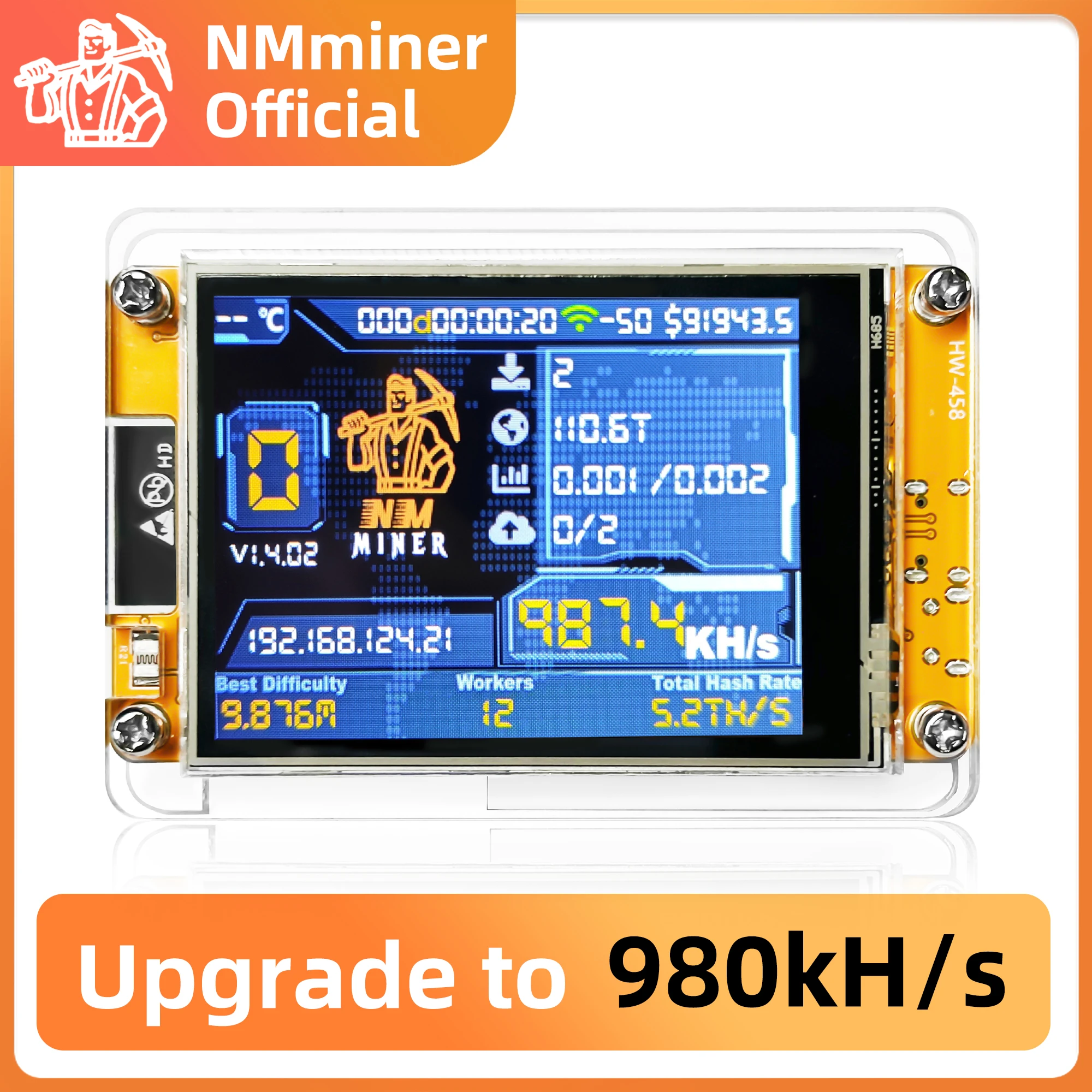
The Three Lotteries: A Mathematical Showdown
Let's compare three ways to chase unlikely dreams:
- Polish Lotto (our local version of a national lottery, think mini-Eurojackpot): Pick 6 numbers from 49
- Eurojackpot: Pick 5 numbers from 50, plus 2 bonus numbers from 12
- Solo Bitcoin Mining with a 1000 KH/s ESP32 miner
The "Right Now" Probability
In a single attempt—one lottery draw or one hash attempt—here's what we're looking at:
- Lotto (6 out of 49): 1 in 13,983,816
- Eurojackpot (5+2): 1 in 139,838,160 (10 times harder than Lotto)
- Mining BTC solo (1000 KH/s): Let's do the math...
Your miner's power: 1000 KH/s = 1 MH/s
Bitcoin network's total power: ~700 EH/s (Exahashes per second)
Converting units: 1 EH/s = 1,000,000,000,000 MH/s
Your chance of finding the next block: 1 in 700,000,000,000,000,000,000
Yes, that's 700 quintillion. To put this in perspective, if Lotto is like finding a specific grain of sand on a beach, solo Bitcoin mining with 1 MH/s is like finding a specific atom in all the sand on every beach on Earth. Then doing it again. On Mars.
Immediate conclusion: In a single moment, Lotto is astronomically easier. But this comparison is misleading...
Time Changes Everything: The 24/7 Advantage
Here's where it gets interesting. Your miner doesn't sleep. It doesn't take breaks. It "plays the lottery" 1,000,000 times per second, every second, forever (or until you unplug it).
- Miner: 1,000,000 attempts per second, non-stop
- Lotto: One attempt every few days (if you buy a ticket)
- Eurojackpot: One attempt every few days (if you buy a ticket)
It's like comparing someone flipping a coin three times a week to a machine flipping a million coins every second. The raw probability per flip might favor the human, but the sheer volume...
The Annual Lottery: Who Wins in a Year?
Let's scale up to one year of continuous "playing":
Lotto
- Drawings: 3 times per week = 156 per year
- Playing one ticket per drawing
- Probability of hitting the jackpot at least once in a year: ~1 in 90,000
Eurojackpot
- Drawings: 2 times per week = 104 per year
- Playing one ticket per drawing
- Probability of hitting the jackpot at least once in a year: ~1 in 1,350,000
Bitcoin Solo Mining (1000 KH/s)
- New blocks found: Approximately every 10 minutes
- Total blocks per year: ~52,560
- Your share of network hashrate: 1 MH/s / 700 EH/s
- Probability of finding at least one block in a year: ~1 in 13,300,000,000,000
Yeah. I need to sit with that for a moment.
| Category | Annual Probability |
|---|---|
| Lotto (6/49) | ~1 in 90,000 |
| Eurojackpot (5+2) | ~1 in 1,350,000 |
| BTC Solo Mining (1000 KH/s) | ~1 in 13,300,000,000,000 |
I'll be honest: I expected the miner to do better after a full year of non-stop attempts. The math doesn't lie, though. The Bitcoin network is just that massive. Your little ESP32, hashing away heroically at 1 MH/s, is competing against industrial data centers with hashrates measured in Exahashes. It's a David vs. Goliath story, except Goliath is the size of Jupiter and has laser eyes.

The Financial Reality Check
Let's talk about what this dream costs:
Lotto
- 156 drawings × $1 per ticket = $156 per year
Eurojackpot
- 104 drawings × $3.50 per ticket = $364 per year
NMMiner ESP32 Bitcoin Lottery Machine
- Device cost: $20 (one-time purchase)
- Power consumption: 1W continuous
- Annual electricity: 8.76 kWh × $0.25/kWh = ~$2.50 per year
- Total first-year cost: $22.50
- Subsequent years: $2.50
Financially, the miner is a no-brainer. It's the cheapest lottery ticket you'll ever buy—and it never expires. You're essentially buying a perpetual lottery entry for less than the cost of a pizza.
The catch? You're buying a ticket to a lottery where the odds are... well, you saw the numbers.
The NMMiner: Your Tiny Bitcoin Lottery Machine
Despite the ridiculous odds, there's something genuinely appealing about this project. The NMMiner isn't just a miner—it's a conversation piece, a learning tool, and honestly, a pretty cool desk gadget.
What Makes It Special?
The NMMiner is based on the ESP32-2432S028R board with an ST7789 display. It's a complete package: processor, screen, and all the circuitry needed to attempt (emphasis on "attempt") solo Bitcoin mining. The whole thing fits in your palm and looks surprisingly polished.
Installation is remarkably easy thanks to the web-based flasher at flash.nmminer.com. You literally just plug in the device, open the website in Chrome or Edge, and click a few buttons. No Arduino IDE, no compiling, no command-line wizardry required.
Important note: When you're selecting your device for flashing, the esp32-2432s028r-st7789 model is hiding in a different section than the rest of the ESP32 variants. Ask me how I know this. Go ahead, ask. (I initially flashed the wrong variant—028r-ili9341—which technically works but displays everything in inverted colors. It's... a look.)
The Touchscreen Experience
Here's something neat: the screen is actually touchscreen! You can swipe between three different display screens with your finger. Granted, the refresh rate is maybe 2-3 FPS—this isn't an iPhone—but you don't have to fumble with buttons on the back of the device. It's surprisingly satisfying to swipe through mining stats, time, and Bitcoin price with a finger tap.
The three screens show:
- Mining statistics: Hashrate, shares, uptime
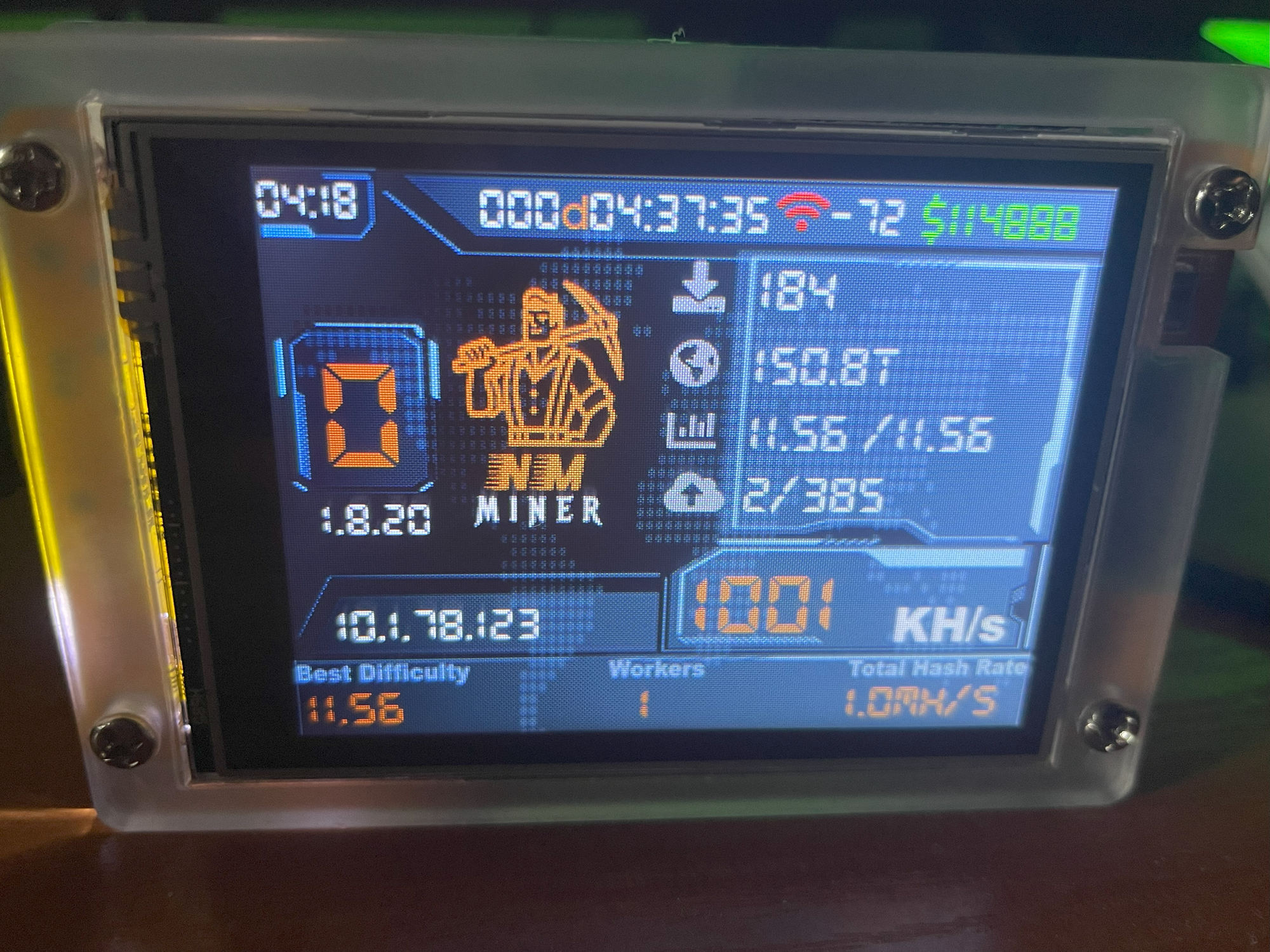
- Clock and date: Synchronized via NTP, because why not?
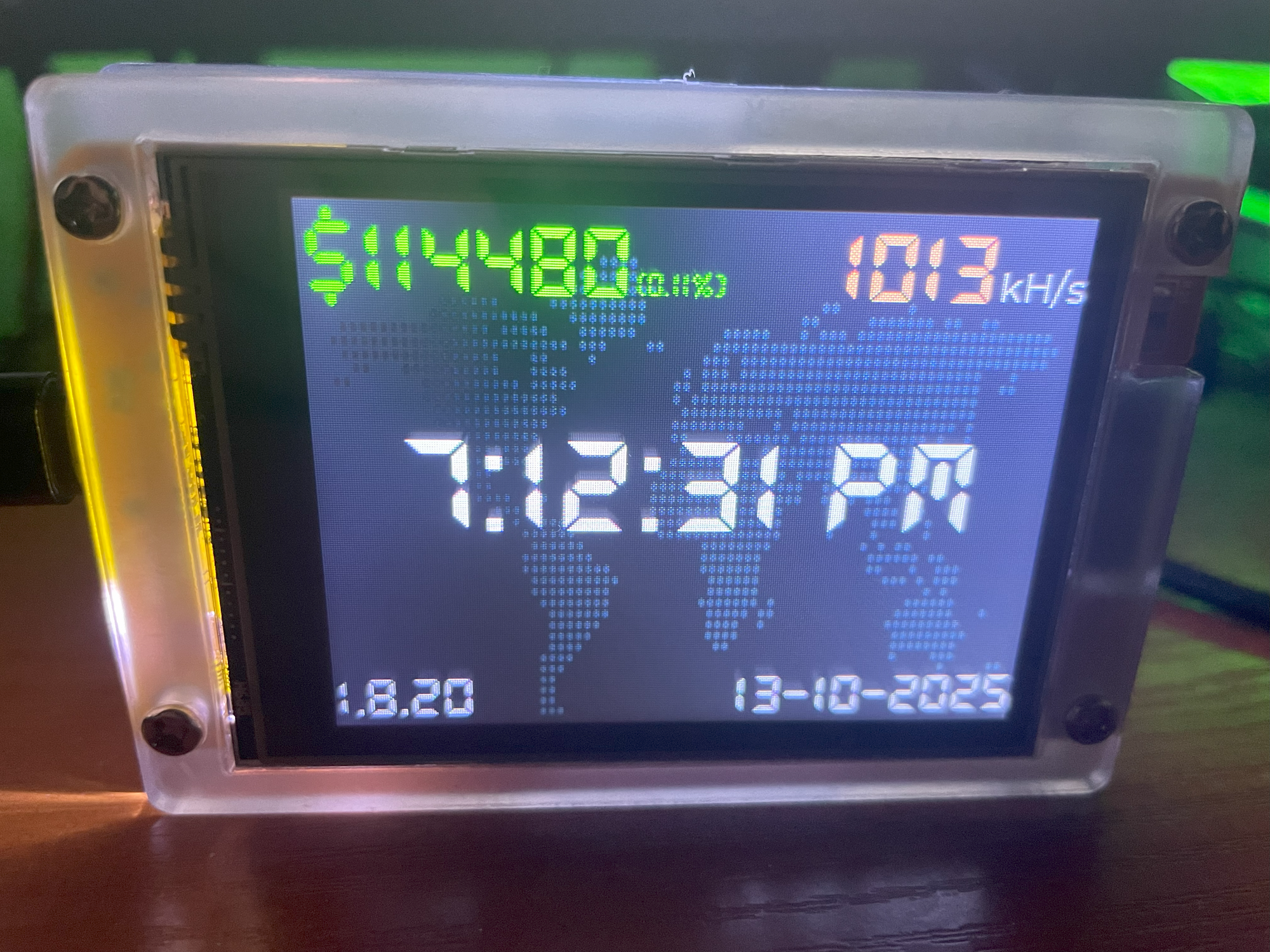
- Bitcoin price: Live market data
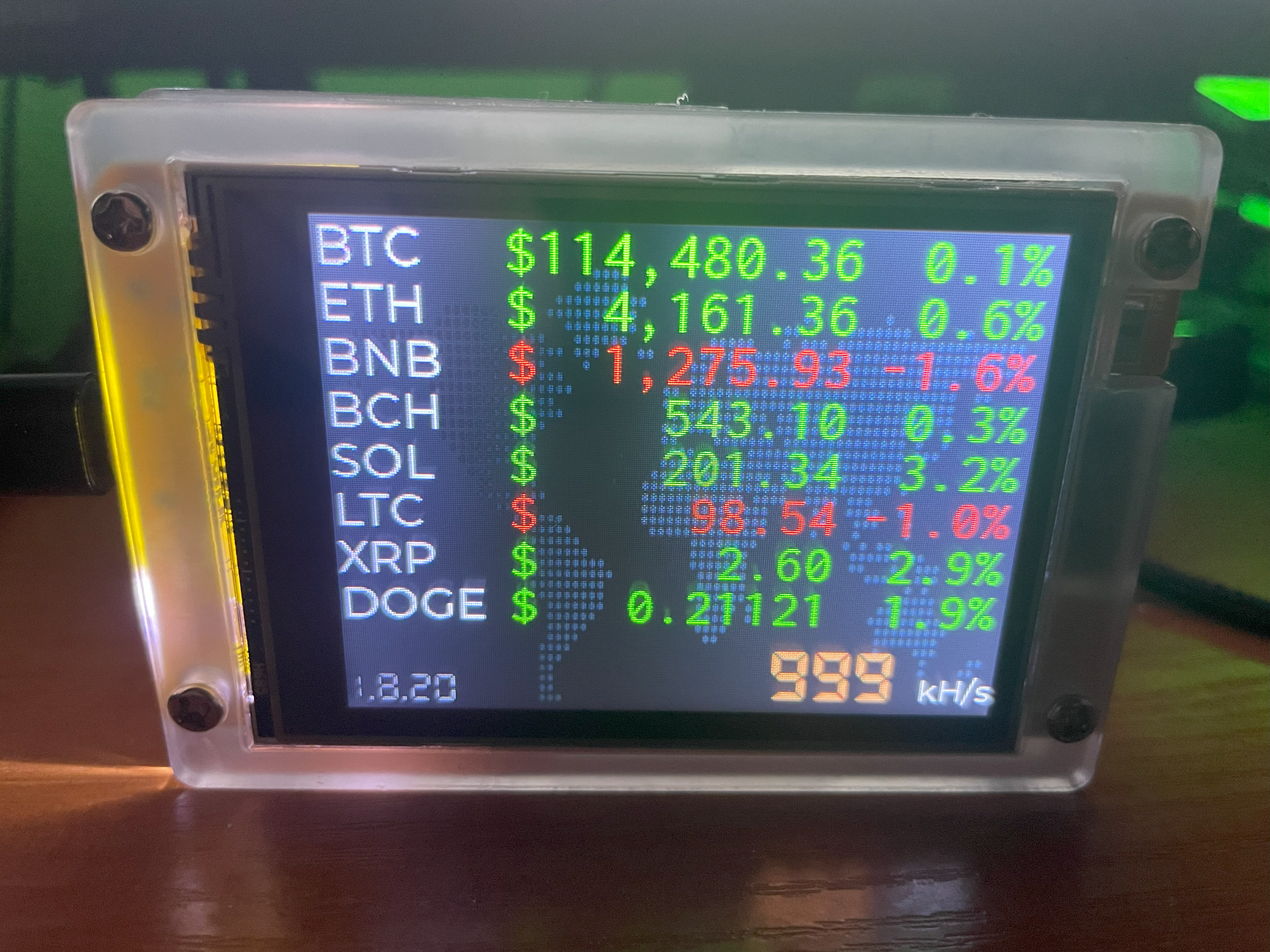
Even if you never mine a single satoshi, you've got a neat desk clock that shows BTC price and actual time. For 20 bucks, that's not a bad deal. Oh, and did I mention you're also participating in a perpetual lottery? That's just a bonus feature.
Initial Setup: The Access Point Dance
When you first power on the NMMiner, it creates its own WiFi access point. The login credentials are displayed right on the screen—no manual reading required. You connect to it, configure your home WiFi network, and enter your Bitcoin address.
Here's a pro tip: The device lets you configure two different solo mining pools. Why two? Redundancy, I suppose. Also, the default configuration includes a Vertcoin (VTC) address that goes to the NMMiner project creators. If you ever actually mine a block, you'd be supporting the developers automatically. But let's be real—you should probably change that to your own BTC address. Just saying. (Though if you DO hit a block, throwing them a tip wouldn't be uncalled for.)
The Impressive Part: 1 MH/s on a $20 Device
Let's take a moment to appreciate the engineering here. This tiny ESP32 board, powered by USB, manages to hash at 1 MH/s (1000 KH/s) completely passively. No fans. No heatsinks. No thermal throttling. It just... works.
Compare this to the NerdMiner v2, which pulls about 77 KH/s and requires a cooling fan. The NMMiner is over 13 times more powerful and doesn't need active cooling. That's legitimately impressive.
The device also has a pretty RGB LED on the back (a nice touch), comes with a protective acrylic case, and even lets you turn off the screen if you don't want it glowing at night or want to save an extra milliwatt of power. You can monitor everything through the built-in web server anyway—just navigate to the device's IP address in your browser.
Living with a Bitcoin Lottery Ticket
So what's it actually like to run one of these?
Honestly? It's oddly peaceful. The device sits there, silently humming through hash after hash, displaying a steady "1.00 MH/s" on the screen. Every ten minutes, a new Bitcoin block is found by someone, somewhere. It's never you. But there's something zen about knowing it could be.
I've set up a simple Home Assistant dashboard that shows:
- Current hashrate
- Uptime
- Total hashes computed
- Current Bitcoin block height
- My "chance of success" counter (currently at 0.000000000000000001% and climbing)
It's become a conversation starter. Friends come over, see this tiny glowing device on my desk, and ask what it is. "It's a Bitcoin miner," I say. They look confused. "How much have you made?" they ask. I laugh. "Nothing. And I probably never will. But there's a chance!"
The Philosophy of Lottery Mining
Here's the thing about solo mining with 1 MH/s: everyone knows the odds. The math is public. No one's getting scammed here. You know you're buying a lottery ticket—an incredibly improbable lottery ticket—but it's your lottery ticket, running 24/7, for less than the cost of a coffee per year.
Is it rational? Absolutely not. Is it fun? Absolutely yes.
It's the same reason people play the lottery despite knowing the odds. Except this lottery:
- Costs less
- Runs continuously
- Teaches you about cryptocurrency and mining
- Looks cool on your desk
- Also functions as a clock and price ticker
- Never expires
And here's the beautiful part: someone, somewhere, has won the Bitcoin lottery with absurdly low hashrates. It's documented. It's rare, but it happens. Block 125552 was famously mined by someone with minimal hashrate. Block 790,361 was mined by someone with approximately 120 TH/s—which is massive, but still solo mining against the entire network.
Could it happen to you with 1 MH/s? The math says "probably not in your lifetime." But "probably not" isn't "impossible."
The Real Treasure
You know what the actual treasure is here? It's not the potential Bitcoin block (though that would be nice). It's the fact that for $20 and $2.50 per year in electricity, you get:
- A hands-on introduction to how Bitcoin mining actually works
- A functional understanding of hashrates and network difficulty
- A pretty cool IoT device with NTP-synced time and live price feeds
- A touchscreen interface that, while slow, is genuinely useful
- The knowledge that you're participating in the Bitcoin network, even if in the tiniest way possible
- A perpetual lottery ticket that requires zero maintenance
- An excellent conversation piece for your desk
- The tiniest, most improbable sliver of hope that maybe, just maybe...
The NMMiner project is open-source (github.com/NMminer1024/NMMiner), actively maintained, and has a community of people running these devices. Some run dozens of them. Some run hundreds. Are they all going to strike it rich? No. Are they having fun and learning about cryptocurrency in the process? Absolutely.
The Verdict: Is It Worth It?
If you're looking for a profitable mining operation, buy ASIC miners and join a pool like a normal person. If you're looking for a reliable return on investment, buy index funds.
But if you want:
- The cheapest lottery ticket in existence
- A cool desktop gadget that actually does something
- A hands-on Bitcoin education
- The right to say "I'm a Bitcoin miner" (technically true!)
- A tiny, improbable, mathematically-supported chance at mining a block worth ~$600,000 USD
Then yes. Absolutely yes. For $20 and less than $3 per year to run, the NMMiner is worth every dollar.
I'm not going to mine a block. You're probably not going to mine a block. The math is clear. But we might. And that "might," no matter how small, is worth something.
Plus, I really do appreciate having a desk clock that shows Bitcoin price. That alone justifies the purchase in my book.
Now if you'll excuse me, I need to check my miner's uptime. It's been running for 47 days straight, which means I've computed approximately 4,060,800,000,000 hashes.
None of them have been winning hashes.
Yet.
Support This Blog — Because Heroes Deserve Recognition!
Whether it's a one-time tip or a subscription, your support keeps this blog alive and kicking. Thank you for being awesome!
Tip OnceHey, Want to Join Me on This Journey? ☕
While I'm brewing my next technical deep-dive (and probably another cup of coffee), why not become a regular part of this caffeinated adventure?
Subscribe
